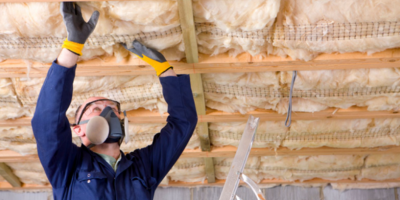When it comes to keeping your home comfortable and energy-efficient, insulation is one of the most important — yet often overlooked — components. Whether you’re building a new home or updating an older one, understanding how insulation works can help you make smarter decisions about saving energy, reducing utility bills, and staying cozy year-round. In this beginner’s guide, we’ll break down the basics of insulation in a way that’s easy to understand, with practical examples and friendly tips along the way.
Whether you’re a homeowner, renter, or DIY enthusiast, this guide — with insights from Miss Her Insulation — will help you make the most of your home’s comfort and efficiency.
What Is Insulation?
At its core, insulation is a barrier that slows down the movement of heat. It helps keep warm air inside during winter and cool air inside during summer. Without proper insulation, your home becomes less energy-efficient, and your heating or cooling systems have to work overtime — driving up your utility bills.
You can think of insulation like a thermos. A thermos keeps your drink hot or cold because it blocks the transfer of heat. Insulation works the same way for your house.
How Does Insulation Work?
Insulation works by resisting the natural flow of heat. Heat moves in three ways: conduction, convection, and radiation. Here’s how insulation tackles each:
1. Conduction
This is the way heat moves through materials — like a metal spoon in hot coffee getting warm. Insulation resists conduction by using materials that are poor conductors of heat, like fiberglass or foam.
2. Convection
This is how heat circulates through liquids and gases. In your home, warm air rises and cold air sinks. Insulation slows down this air movement inside walls, attics, and floors, maintaining a steady indoor temperature.
3. Radiation
Heat travels in waves — think of sunlight beaming through a window. Some insulation types include reflective surfaces (like foil-faced boards) to reflect radiant heat away from your living space.
Types of Insulation (And How They Work)
There’s no one-size-fits-all when it comes to insulation. Different areas of your home need different solutions, and understanding the types available helps you choose what works best.
1. Batt and Roll Insulation (Blanket Insulation)
-
Material: Usually made from fiberglass, mineral wool, or cotton.
-
Where it’s used: Between wall studs, attic joists, and floor beams.
-
How it works: Traps air in tiny pockets within the fibers, slowing down heat movement.
2. Blown-In or Loose-Fill Insulation
-
Material: Fiberglass, cellulose (recycled paper), or mineral wool.
-
Where it’s used: Attics, walls, and hard-to-reach areas.
-
How it works: It’s blown into place, filling gaps and irregular spaces for more complete coverage.
3. Spray Foam Insulation
-
Material: Polyurethane foam.
-
Where it’s used: Walls, roofs, and basements.
-
How it works: Expands on contact, sealing gaps and cracks. Offers high insulation value and air-sealing properties.
4. Foam Board (Rigid Panel) Insulation
-
Material: Polystyrene, polyisocyanurate, or polyurethane.
-
Where it’s used: Basement walls, under siding, and foundation exteriors.
-
How it works: Dense and rigid, it provides continuous insulation with high thermal resistance.
5. Reflective or Radiant Barrier Insulation
-
Material: Aluminum foil on paper or plastic film.
-
Where it’s used: Attics in hot climates.
-
How it works: Reflects radiant heat away from your home, especially useful in keeping attics cooler.
Where Should Insulation Be Installed?
The effectiveness of insulation depends not only on the type but also on where it’s installed. For maximum comfort and energy savings, focus on:
1. Attics
Heat rises, so your attic should be your top priority. Without attic insulation, warm air escapes in winter and overheats your home in summer.
2. Walls
Both exterior and interior walls benefit from insulation. It keeps heat in, reduces noise, and adds structural strength.
3. Floors
Insulating floors above unheated spaces (like garages or basements) helps maintain consistent indoor temperatures.
4. Basements and Crawlspaces
These spaces are prone to moisture and temperature swings. Insulation helps prevent cold floors and water damage.
5. Ductwork and Pipes
Insulating ducts and hot water pipes can prevent heat loss, reduce energy use, and avoid frozen pipes in winter.
What Is R-Value (And Why Does It Matter)?
When shopping for insulation, you’ll often see the term R-value. This number indicates how well the material resists heat flow — the higher the R-value, the better the insulation.
Different areas of your home and different climates require different R-values. For example:
-
In cold climates, you’ll want higher R-values in attics (R-49 to R-60).
-
In warmer areas, walls and floors with lower R-values (R-13 to R-21) may be enough.
Miss Her Insulation can help assess your home’s needs and recommend the right R-values for each space.
Why Insulation Is a Smart Investment
Upgrading your insulation is one of the most cost-effective ways to improve your home. Here’s why:
1. Energy Savings
Proper insulation reduces the amount of energy needed to heat or cool your home. According to the U.S. Department of Energy, you could save up to 15% on heating and cooling costs.
2. Increased Comfort
A well-insulated home maintains a more stable and comfortable temperature — no more hot upstairs and freezing basement.
3. Better Air Quality
Insulation can help block outdoor pollutants, allergens, and moisture from entering your home.
4. Noise Reduction
Insulated walls and floors reduce outside and inside noise, making your home quieter and more peaceful.
5. Environmental Benefits
Using less energy lowers your carbon footprint — a win for your wallet and the planet.
Signs Your Home Needs Better Insulation
Not sure if your insulation is doing its job? Here are some telltale signs that it might be time to upgrade:
-
High energy bills (especially in winter or summer)
-
Drafty rooms
-
Uneven temperatures in different rooms
-
Ice dams on your roof in winter
-
Overworked heating or cooling system
-
Cold walls or floors
If you’re noticing any of these, it may be time to call in the pros at Miss Her Insulation for an assessment.
DIY or Hire a Pro?
Some insulation projects — like laying batts in an attic — can be DIY-friendly. But others, such as spray foam application or dense pack insulation in walls, require specialized tools and training.
Working with a trusted professional like Miss Her Insulation ensures:
-
Proper installation and sealing
-
Correct R-values for your region
-
Safe handling of materials
-
Compliance with building codes
They can also help you find rebates, tax credits, and energy efficiency incentives in your area.
What Makes Miss Her Insulation Stand Out?
Miss Her Insulation brings experience, expertise, and a commitment to customer satisfaction. Whether you need a quick attic upgrade or a whole-home solution, their team makes insulation easy and stress-free.
Here’s why homeowners trust them:
-
Customized solutions based on your home’s layout and needs
-
High-quality materials that last
-
Prompt and professional service
-
Energy audits and performance testing to measure improvements
Insulation may not be flashy, but with the right partner, it’s one of the smartest improvements you can make to your home.
FAQs
1. How do I know what insulation my home currently has?
You can often check your attic, crawlspace, or basement to see what’s installed. For walls, it’s harder to tell without drilling — which is why many homeowners rely on professional assessments from companies like Miss Her Insulation.
2. Can I add new insulation over old insulation?
In many cases, yes — especially in attics. However, it’s important to make sure the existing insulation isn’t wet, moldy, or compressed. If it is, it should be removed before adding more.
3. Is insulation only important in cold climates?
Nope! Insulation helps in hot and cold climates by regulating temperature. It keeps your home cooler in the summer and warmer in the winter, reducing the strain on your HVAC system year-round.
Final Thoughts
Insulation might not be something you see every day, but it plays a huge role in your comfort, energy bills, and home value. By understanding how it works — and knowing your options — you can make smarter decisions about upgrading your space.
Whether you’re battling drafty winters, noisy streets, or sky-high energy bills, a trusted provider like Miss Her Insulation can help you find the perfect solution for your home.
- How Insulation Works: A Beginner’s Guide
- Learn how insulation works in this beginner’s guide! Discover how insulation saves energy, improves comfort, and why Miss Her Insulation is your go-to expert for home insulation solutions.
- How Insulation Works: A Beginner’s Guide
Related posts:
 Discover the Best Fence Installation Services in Omaha with Huskins Services LLC
Discover the Best Fence Installation Services in Omaha with Huskins Services LLC
 ISO 27001 Training: A Real-World Lifeline to Reduce the Risk of Data Breaches
ISO 27001 Training: A Real-World Lifeline to Reduce the Risk of Data Breaches
 How Instagram Stories Help Businesses: A 2025 gerat Guide ..
How Instagram Stories Help Businesses: A 2025 gerat Guide ..
 “GV GALLERY® || TheGv Gallery Shop || Official Clothing Store “
“GV GALLERY® || TheGv Gallery Shop || Official Clothing Store “
 Don’t Miss Out on today’s Best Sale Offer with Huge Discounts!
Don’t Miss Out on today’s Best Sale Offer with Huge Discounts!
 Why Smart Entrepreneurs Trust a Certified Tax and Business Advisor Over DIY Tax Tools
Why Smart Entrepreneurs Trust a Certified Tax and Business Advisor Over DIY Tax Tools
 Web Design Agency Netherlands: Elevate Your Online Presence with Creative Excellence
Web Design Agency Netherlands: Elevate Your Online Presence with Creative Excellence
 Comprehensive Seed Industry Analysis: Trends & Market Insights
Comprehensive Seed Industry Analysis: Trends & Market Insights







